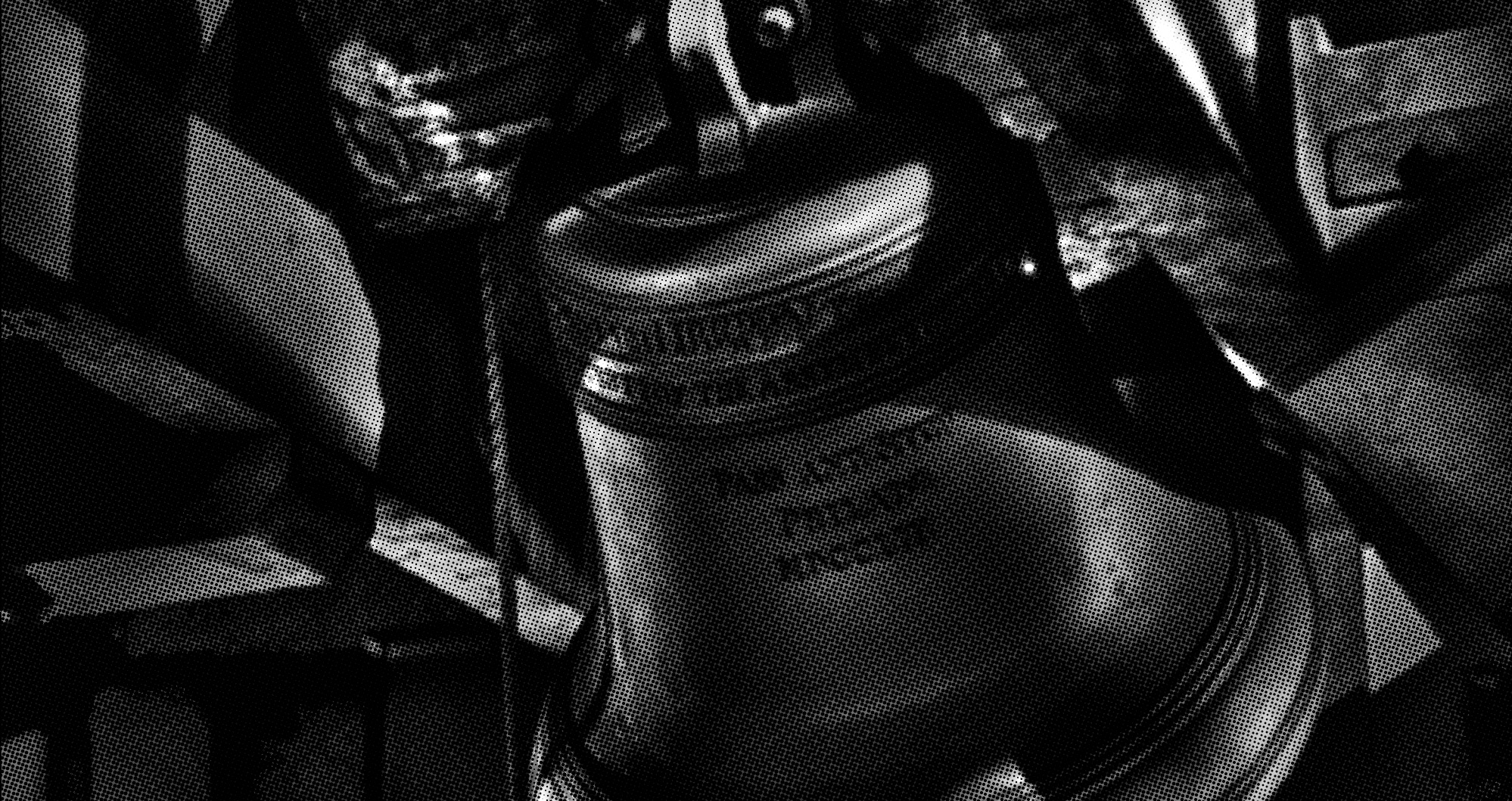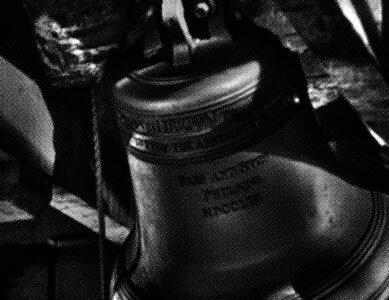What ever happened to Frank Capra’s Liberty Bell?
If you have a heart, then there is a place in that heart of yours for the Christmas classic, It’s a Wonderful Life.*
From the first second, you know exactly what’s coming on the television and what you’ll be doing for the next two hours. A low, reverberant clangor fills the living room as a swinging Liberty Bell fades in from black. Giant dimensional letters emerge from its swaying clapper: Liberty Films Presents …
The 1946 film was a well-received but financially disastrous first release for the newly formed independent film company founded by director Frank Capra and producer Samuel J. Briskin. Unable to climb out of the deep debt the picture dug, Liberty Films completed only one other production before Paramount Pictures gobbled up its assets. The Jimmy Stewart / Donna Reed vehicle gained a massive new audience after it entered the public domain in 1974 due to a clerical error at the U.S. Copyright Office. Over the next twenty holiday seasons, it was broadcast a bazillion times on stations across the country.
I’ve seen It’s a Wonderful Life half a bazillion times, and its Liberty Bell logo is deeply ingrained in my long-term memory. But I didn’t draw a connection between my favorite holiday film and my bell-hunting pastime until someone commented on the site asking if I knew anything about Frank Capra’s Liberty Bell. I dove down the research rabbit hole, but the mystery only deepened.
Taking stock
I quickly learned that Capra didn’t blow his budget by commissioning his very own replica. While a full-size, functional Liberty Bell would have made a striking first impression in the Liberty Films lobby, the filmmakers instead relied on tried-and-true movie magic: stock footage. This clip, described as 1930s Liberty Bell Ringing, features an additional closeup. The footage below includes sound effects, voiceover and a stiffly reenacted Continental Congress.
Central casting
A closer look at the Liberty Films Liberty Bell suggests it was made to be in pictures. The original Liberty Bell and all replicas feature a quote from the Old Testament book of Leviticus:
Proclaim LIBERTY Throughout All the Land Unto All the Inhabitants thereof. — Lev. XXV X.
The scripture starts front and center on the bell, wrapping completely around until the end of the sentence meets the beginning. So, when looking straight at it, you see:
… Lev. XXV X. Proclaim …
The Hollywood replica improves upon the historic original by rotating the inscription to focus the eye firmly on LIBERTY in all caps.
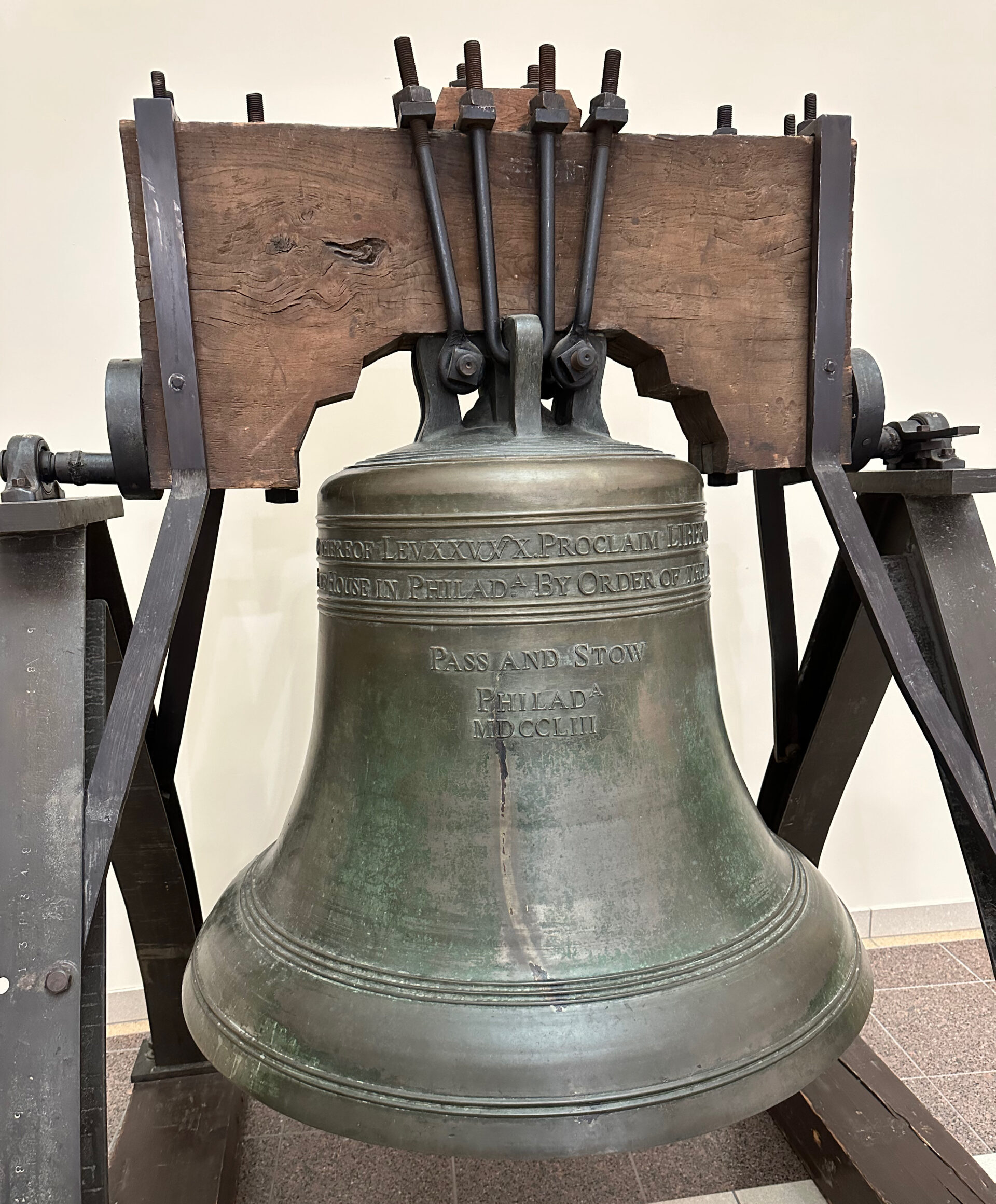
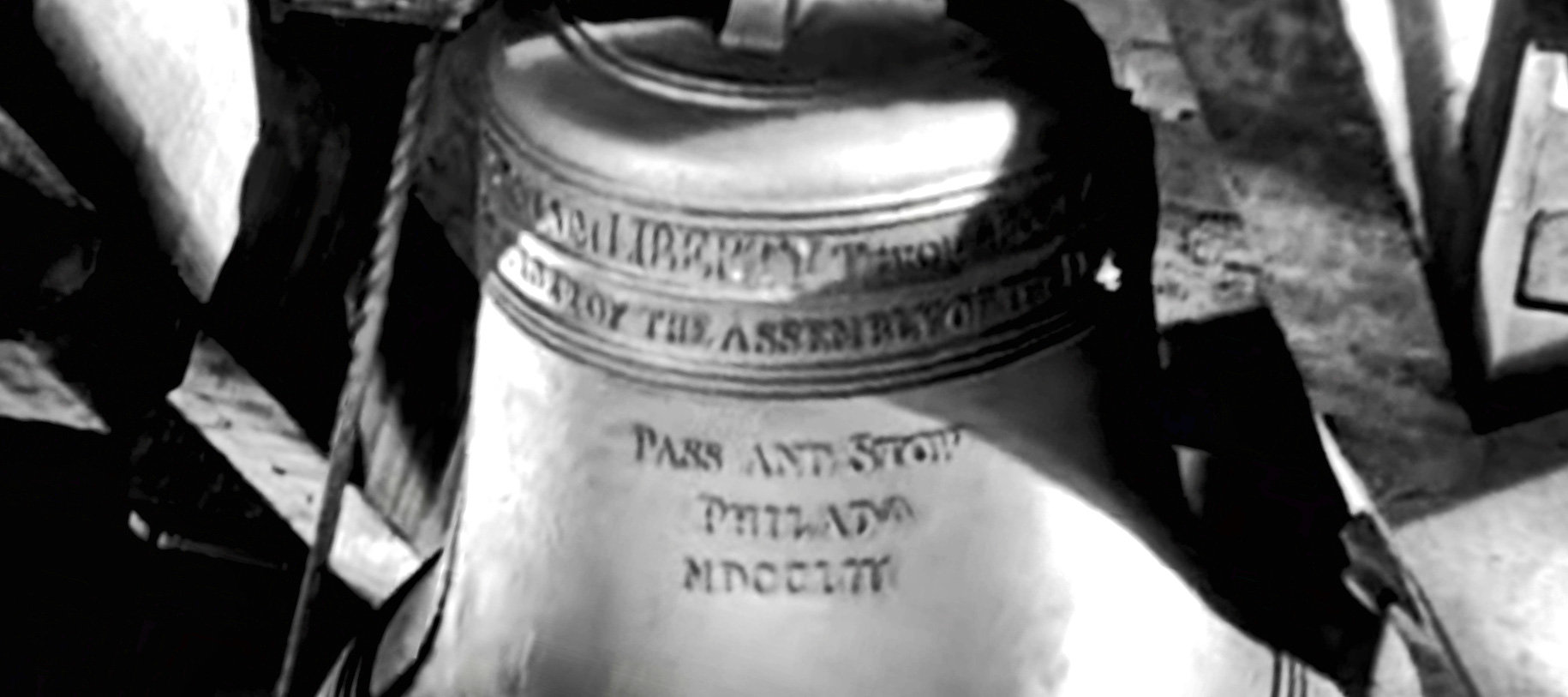
Giving props
If it was made for film, we’re then left to question whether it was an actual bell or the product of a Hollywood prop shop. Digging deeper, I found additional stock footage, including two seconds of a man excitedly waving his tri-corner hat as a boy tugs a rope tied to a lever affixed to the bell’s yoke. On the Liberty Bell’s backswing, the youngster hangs on and takes flight. This seems to confirm the bell’s scale and that it’s heavy enough to lift a child.
Somewhere in time
If we’re looking at a genuine full-size replica, is it one of the 150+ Liberty Bells listed on this site? Cast before 1946, we can rule out all but about a dozen bells. It’s not the work of Paccard, who didn’t get into the replica game until 1950. We can also rule out bells from Whitechapel. They replace the names of the Liberty Bell’s not-so-skilled recasters (Pass and Stow) with that of their predecessor and the bell’s original caster (Thos. Lester of London).
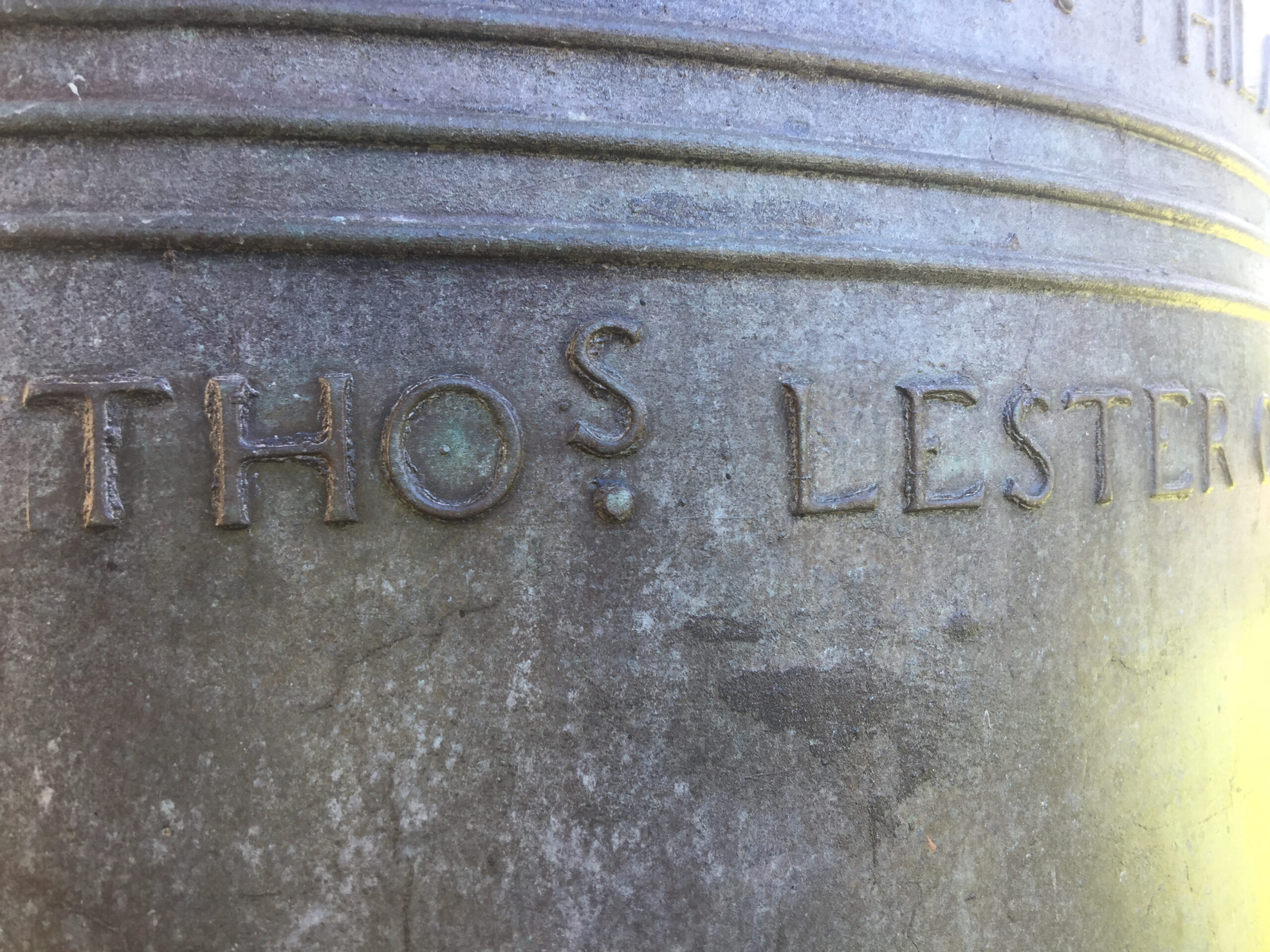
Available photographs help rule out some other bells that existed at the time of filming, namely Vaclav, the Justice Bell and Henry Ford’s replica.
A Hollywood ending?
The bell that was until recently my leading suspect sits quietly inside a small museum within an expansive Hollywood cemetery.
The self-described Disneyland of Death, Forest Lawn Memorial-Gardens, is the life’s work of Dr. Hubert L. Eaton. He reimagined graveyards not as dark, foreboding places full of creepy headstones but as serene parks full of faithful replicas of famous monuments. Ambiance aside, Forest Lawn’s main draw is the graves of countless celluloid heroes, including It’s a Wonderful Life’s Lillian Randolph, who lived long enough to see the cemetery allow the interment of Black people.
Eaton was amassing his replica collection in the ’30s and ’40s. He was obviously dialed into the Hollywood set. And it’s not a stretch to imagine him either lending his Liberty Bell to a film production or acquiring the bell from the filmmakers after the fact.
The rough-hewn yoke, hardware and clapper all match up. The cemetery bell bears a crack. But that could have been painted on or dremeled in after the fact. Getting close enough to see the inscription would either seal the deal or dash my hopes.
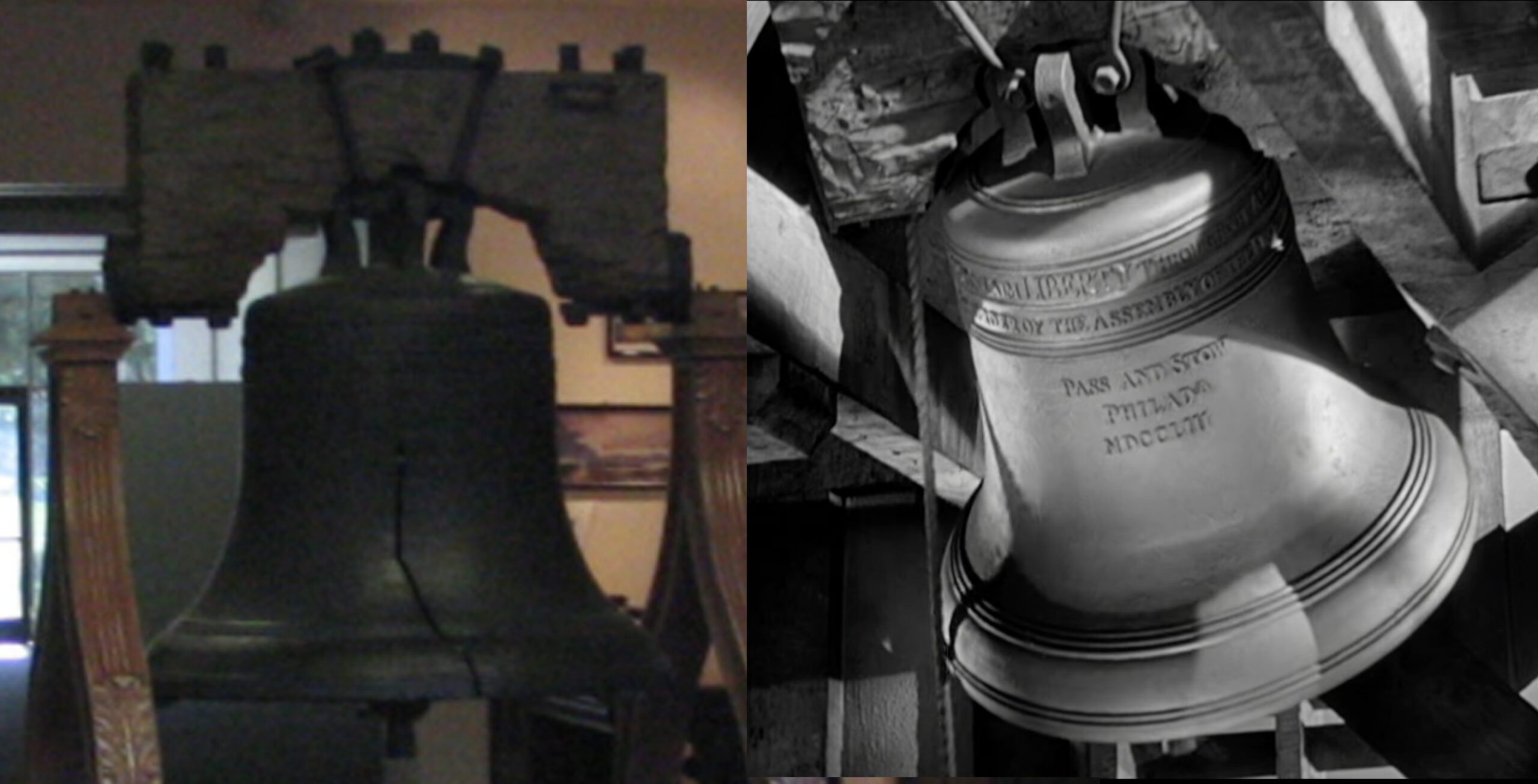
The answer, it turned out, was waiting for me at HipPostcard.com for two dollars (plus two dollars shipping). The online preview was inconclusive. When it landed in my mailbox, I could just barely see the word LIBERTY through the thick moiré pattern of the cheaply printed postcard — right where it is on most replicas, not front and center. The Forest Lawn bell and the Liberty Films bell are not one and the same.
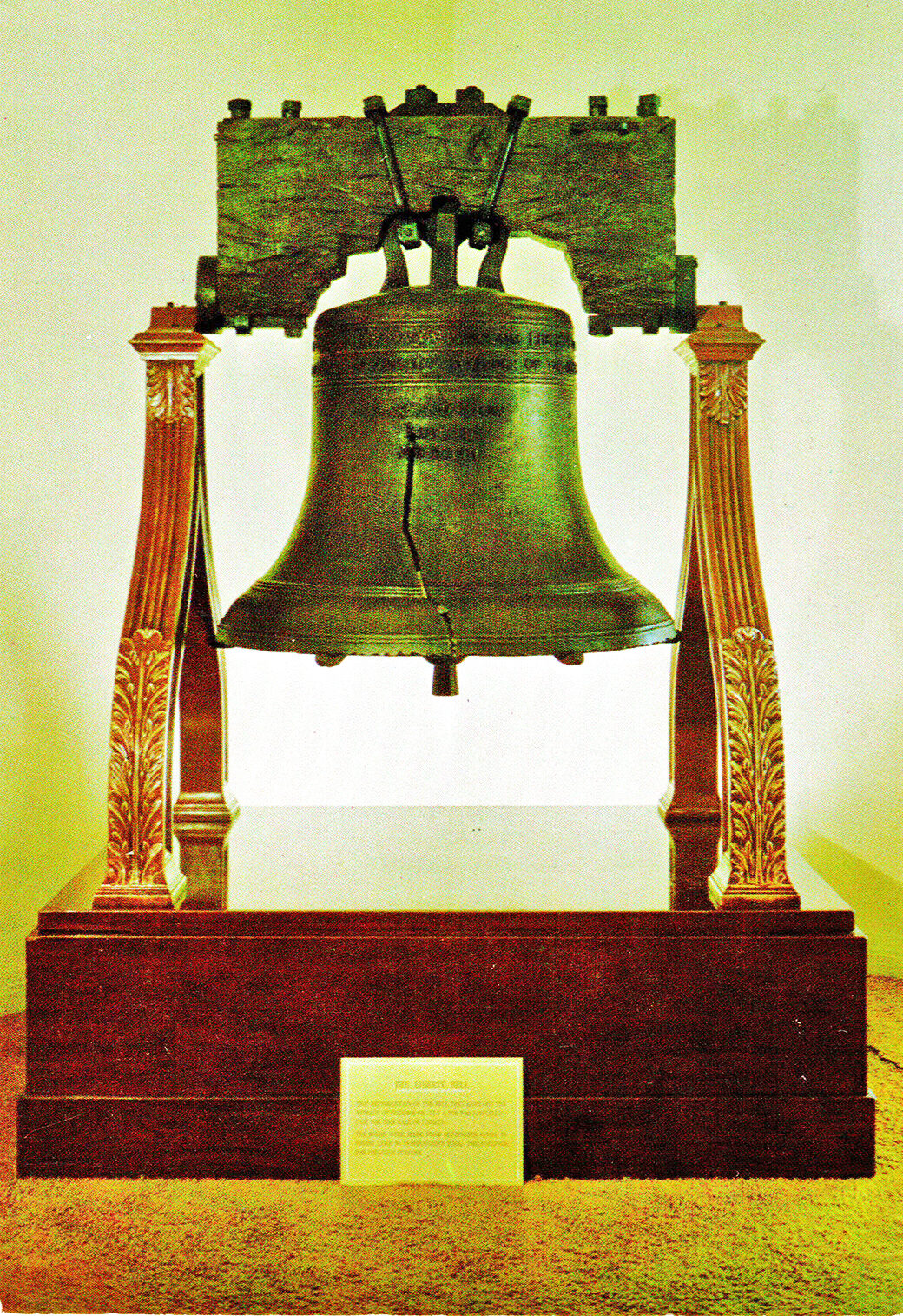
Ringing true?
Bell lovers have a way of finding each other, and I’m surprised and delighted to have connected with a number of super-knowledgeable and passionate folks. Unlike a lot of professions, the rock stars of the bell world are as cool as they are accessible. I reached out to Paul Ashe of the National Bell Festival, who, in turn, reached out to some of the best minds in the business.
Asked to review the footage and opine on the bell’s authenticity, the brain trust served up a split decision.
Joshua Meeks and Tim Verdin think the Liberty Films Liberty Bell is the genuine article, citing the clapper’s realistic bounce-back against the sound bow and noticing a wear spot at the point of impact.
Ashe sides with McShane Bell Company owner James Androuais and esteemed campanologist Carl Scott Zimmerman in calling the bell a Hollywood prop.
While the filmmakers made a convincing likeness, several things raised the experts’ suspicions. Whether it was a bonafide bronze bonger or a product of the prop shop, the bell wasn’t mounted, operated or supervised by a skilled belladier. If it were a real bell assembly, the rope would be attached to a wheel rather than the lever shown. While it hangs from the lever in the wide shot, the rope dangles haplessly in the close-up, making contact with both the yoke and bell — an egregious hazard no bellmaker would allow. The bell’s inside lip is fairly flat. There are a suspicious number of lathe marks on the underside, likely a prop master’s attempt to make it look tuned. Lastly, the frame braces are in the wrong places.
Ashe does give the 80-year-old production some kudos, “The general concept of the belfry is reasonable, and the sound is nicely synchronized with the movement of the bell.”
Get your wings
Like all good internet mysteries, after an in-depth investigation, we’re left with more questions than answers.
Was Frank Capra’s Liberty Bell the real deal or a really convincing imposter? Either way, might it still exist? Has it been chilling in somebody’s backyard for 80 years? Was it stashed in a warehouse like some kind of lost ark?
Along with DC’s missing Treasury replica and discovering who really blew up Portland’s Liberty Bell, this stands as one of history’s great Liberty Bell mysteries.
Can someone out there shed some light and reunite this bell with the people who love it?
I offer no reward beyond the pure satisfaction of finding lost treasure and the reminder that every time a Liberty Bell rings —- well, you know what happens.

*Certainly, in 2024, your heart can also find many aspects of It’s a Wonderful Life troubling.
The single Black character (hilariously played by Lilian Randolph) is a domestic worker in service of her white employees. Italian Americans are portrayed as a bunch of goat-wrangling garlic eaters living on the outskirts of whiteness, while the Irish have just been let into the party. It fails the Bechdel-Wallace Test spectacularly. When the audience enters the universe where George has never been born, we see Mary’s tragic fate, working as a bespeckled librarian who wears her hair back. (Capra’s attempt to present an unsexy Mary had the exact opposite effect on young me.) Bartender Nick’s characterization of Geoege and Clarence as “you two pixies” is problematic. However, the subtextual romance between the cop and the cab driver had people asking if Bert and Ernie were gay long before muppets ever existed.
Contemporary critics, of course, had none of these concerns. Instead, they accused the film of being anti-banker and written by commies.

